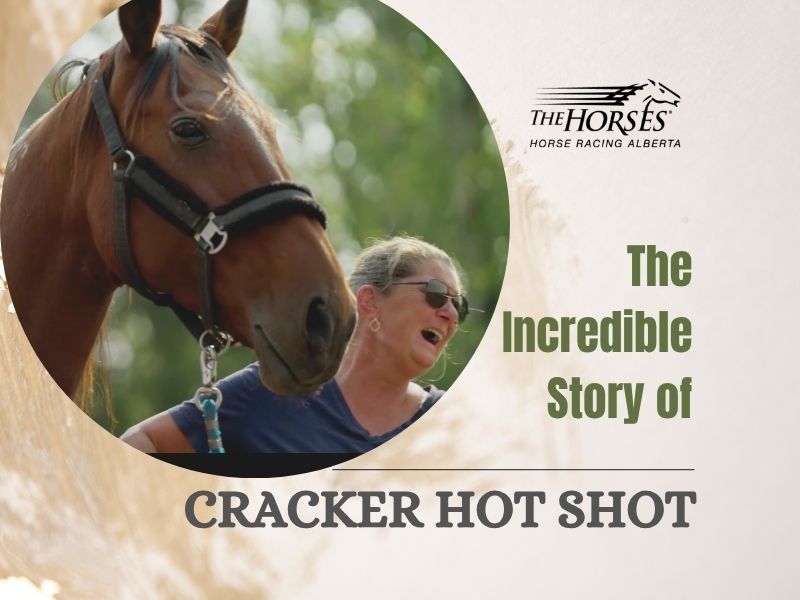Addictions
‘Greening out’: Experts call for THC limits in cannabis products

Experts warn surging THC levels are fuelling growing health risks — and say stronger regulation is urgently needed
More and more cannabis users are ending up in emergency rooms suffering from severe, repeated bouts of vomiting — a condition known as cannabis hyperemesis syndrome.
A new study found that emergency visits for cannabis hyperemesis syndrome increased 13-fold over eight years, accounting for more than 8,000 of the nearly 13,000 cannabis-related ER visits in that period.
Experts say the mounting health risks associated with cannabis use are due to rising THC levels in cannabis products. They urge stronger regulation, better labeling and more research — using Quebec’s approach as a potential model.
“I don’t think we have the perfect model in Quebec — there’s pros and cons,” said Dr. Didier Jutras-Aswad, a clinical scientist at the Centre hospitalier de l’Université de Montréal (CHUM) and a professor in the Department of Psychiatry and Addiction at Université de Montréal.
“But overall, the process of … progressively implementing changes, not wanting to be the first one in line to put all this new product on the market, I think is probably, in terms of public health, more prudent.”
THC levels
Tetrahydrocannabinol (THC) is the primary psychoactive compound in cannabis and what causes the “high.” It is one of more than 100 cannabinoids, or chemical compounds, naturally found in the cannabis plant.
Delta‑9‑THC is the most common and well-studied form, though other forms of THC exist and are less understood.
Federal drug laws place strict limits on delta-9-THC levels. They cap delta-9-THC at 10 milligrams per piece for edibles, and 1,000 milligrams per container for extracts and topicals. Dried cannabis flower and pre-rolled joints have no THC cap, but must disclose the THC level on their labels.
Other intoxicating cannabinoids — like delta-8-THC — are not regulated the same way. Some producers use these other cannabinoids to get around delta-9 limits to make their products more potent.
In 2023, Health Canada issued guidance warning against this practice, noting it could lead to inspections and regulatory action. Its guidance is not legally binding.
“Good weed”
Dr. Oyedeji Ayonrinde, a professor of psychiatry and psychology at Queen’s University, says “good weed” used to mean a product did not contain pesticides or contaminants. Now, it often means a product is high-THC — reinforcing the risky idea that stronger is better.
“We would say, Oh, man, that guy’s got good weed,’ because it’s 30 per cent [THC],” he said.
Today, THC levels average about 25 per cent — up from about four per cent in the 1960s. But some products go as high as 80 or 90 per cent THC.
“That’s ‘the good stuff,’” said Ayonrinde, referring to how consumers view products with these elevated levels of THC.
“One of the major [health] risk factors is the use of cannabis with higher than 10 per cent THC,” said Dr. Daniel Myran, a physician and Canada Research Chair at the University of Ottawa.
Myran led three Canadian studies this year linking heavy cannabis use to health risks such as schizophrenia, dementia and early death.
Chris Blair, a Canadian originally from Jamaica, says the cannabis he once smoked — natural, Jamaican, homegrown weed known as “sess” — was much milder than what is available through Ontario dispensaries today.
“We grew it, it was natural … the regular Mary Jane sess,” he said. “And then times changed … the sess was pushed to almost become the hydro[ponic] type of thing.”
Hydroponic growing methods produce more potent cannabis with higher THC levels. Blair says he could no longer go back to Jamaican sess, because he had built up a tolerance to it.
“Unfortunately, going back to sess was not the same, because it wasn’t the same high or same strength,” he said.
“Back when [I was] smoking [Jamaican sess] … I’d finished that spliff and we were ready to go hang out, we’re ready to party.
“Nowadays, after you smoke you’re mashed and you’re not doing anything.”
Greening out
Ayonrinde says higher THC levels can alter how the brain’s dopamine receptors work, which may induce paranoia.
“Being out of touch with reality, auditory hallucinogens, delusional thoughts, disorganized thinking — that’s part of the mechanism pathway for the development of a severe and enduring mental illness [like] schizophrenia,” he said.
High THC can also worsen anxiety, disrupt sleep, affect mood and trigger psychosis, he says. Other experts cited risks including cannabis use disorder, mental health issues, and dizziness or nausea — sometimes referred to as “greening out.”
Young people, whose brains are still developing until age 25, are most vulnerable to these harmful effects, Ayonrinde says.
During adolescence, the brain undergoes intense growth. “Think of the brain like a construction site,” he said. Frequent, high-dose THC use during this critical period can disrupt dopamine systems and increase the risk of building scaffolding for serious mental health conditions.
While some literature suggests that cannabidiol (CBD) — another major cannabinoid in most cannabis products — may act as a calming, non-psychoactive counterbalance to THC, Ayonrinde says this is only true at extremely high doses, around 6,000 mg.
Standard measurement
Experts say the diversity of cannabis products on the market is part of the challenge.
“When people say, ‘Weed helps me with my trauma,’ an example I often give is: cannabis is just like saying ‘dog’,” said Ayonrinde.
“What breed? Is it a chihuahua or a rottweiler or a great dane? Because without knowing exactly the THC, CBD … what are you talking about?
“There’s no single cannabis.”
Cannabis products lack clear dosage guidelines, and Ayonrinde says marketing messages push consumers to opt for high potency options.
Ruth Ross, a professor of pharmacology and toxicology at the University of Toronto, would like Canada to adopt a standard unit of measurement for THC levels, so consumers could easily understand what one unit means.
“Say a unit was one milligram; they could multiply that up — it’s easy math,” she said.
Myran agrees. “The way we sell alcohol in this country is not set up so that you pay the same amount for a litre of wine as you do for a litre of vodka,” said Myran.
“You have a minimum price per unit of ethanol … and there’s a really compelling reason to price cannabis according to its THC content … [to] financially discourage people from always moving to the highest potency THC products.”
Ross says there is also a need for more current cannabis research. Most cannabis research evaluates the effects of cannabis products with much lower THC levels than those seen on the market today. Long-term health effects can take decades to appear — similar to tobacco.
“Some of [the health harms] might emerge over many, many years, and we don’t know what those will be until data comes in,” she said.
Quebec’s approach
Ross points to Quebec as a unique model in cannabis regulation. It is the only province that caps THC potency and tightly controls how cannabis can be marketed. For example, edibles resembling candy or desserts are prohibited.
Jutras-Aswad, of the Université de Montréal, says overly strict rules can drive some consumers — especially those younger than the province’s legal age of 21 — to the black market.
Still, he says Quebec’s model offers benefits, including greater control over sales and a public health approach focused on harm reduction rather than profit.
Under Quebec’s Cannabis Regulation Act, the Société québécoise du cannabis (SQDC) is the only authorized cannabis retailer in the province.
SQDC employees are trained to offer science-based information, connect consumers with support services and promote safer use.
Researchers in Ontario are now studying how Quebec’s stricter THC limits may be affecting cannabis-related harms compared to other provinces.
“That’s going to be a really interesting within-Canada experiment,” said Ross.
Myran recommends adopting Quebec’s 30 per cent THC caps nationwide.
He also recommends better product labelling requirements and a pricing model that sets a minimum price per unit of THC — to discourage the purchase of high-potency products.
In a 2023 op-ed, Ross argued provinces should fund cannabis research to guide policy and public health.
In it, she notes that Quebec reinvested all $95 million of its 2022 revenue from cannabis sales into prevention and research. By contrast, Ontario set aside just 0.1% of its $170 million in cannabis revenue for a Social Impact Fund that has no clear public health focus.
“Canada can do so much better. We have world experts in cannabis research from coast-to-coast, and we are uniquely positioned to have high-quality, well-funded research on its medical use and potential harms,” she wrote.
“Five years from now, will we be dealing with major public health challenges that could have been avoided?”
This article was produced through the Breaking Needles Fellowship Program, which provided a grant to Canadian Affairs, a digital media outlet, to fund journalism exploring addiction and crime in Canada. Articles produced through the Fellowship are co-published by Break The Needle and Canadian Affairs.
The Bureau is a reader-supported publication.
To receive new posts and support my work, consider becoming a free or paid subscriber.
Invite your friends and earn rewards
Addictions
The Shaky Science Behind Harm Reduction and Pediatric Gender Medicine


By Adam Zivo
Both are shaped by radical LGBTQ activism and questionable evidence.
Over the past decade, North America embraced two disastrous public health movements: pediatric gender medicine and “harm reduction” for drug use. Though seemingly unrelated, these movements are actually ideological siblings. Both were profoundly shaped by extremist LGBTQ activism, and both have produced grievous harms by prioritizing ideology over high-quality scientific evidence.
While harm reductionists are known today for championing interventions that supposedly minimize the negative effects of drug consumption, their movement has always been connected to radical “queer” activism. This alliance began during the 1980s AIDS crisis, when some LGBTQ activists, hoping to reduce HIV infections, partnered with addicts and drug-reform advocates to run underground needle exchanges.
The Bureau is a reader-supported publication.
To receive new posts and support my work, consider becoming a free or paid subscriber.
In the early 2000s, after the North American AIDS epidemic was brought under control, many HIV organizations maintained their relevance (and funding) by pivoting to addiction issues. Despite having no background in addiction medicine, their experience with drug users in the context of infectious diseases helped them position themselves as domain experts.
These organizations tended to conceptualize addiction as an incurable infection—akin to AIDS or Hepatitis C—and as a permanent disability. They were heavily staffed by progressives who, influenced by radical theory, saw addicts as a persecuted minority group. According to them, drug use itself was not the real problem—only society’s “moralizing” norms.
These factors drove many HIV organizations to lobby aggressively for harm reduction at the expense of recovery-oriented care. Their efforts proved highly successful in Canada, where I am based, as HIV researchers were a driving force behind the implementation of supervised consumption sites and “safer supply” (free, government-supplied recreational drugs for addicts).
From the 2010s onward, the association between harm reductionism and queer radicalism only strengthened, thanks to the popularization of “intersectional” social justice activism that emphasized overlapping forms of societal oppression. Progressive advocates demanded that “marginalized” groups, including drug addicts and the LGBTQ community, show enthusiastic solidarity with one another.
These two activist camps sometimes worked on the same issues. For example, the gay community is struggling with a silent epidemic of “chemsex” (a dangerous combination of drugs and anonymous sex), which harm reductionists and queer theorists collaboratively whitewash as a “life-affirming cultural practice” that fosters “belonging.”
For the most part, though, the alliance has been characterized by shared tones and tactics—and bad epistemology. Both groups deploy politicized, low-quality research produced by ideologically driven activist-researchers. The “evidence-base” for pediatric gender medicine, for example, consists of a large number of methodologically weak studies. These often use small, non-representative samples to justify specious claims about positive outcomes. Similarly, harm reduction researchers regularly conduct semi-structured interviews with small groups of drug users. Ignoring obvious limitations, they treat this testimony as objective evidence that pro-drug policies work or are desirable.
Gender clinicians and harm reductionists are also averse to politically inconvenient data. Gender clinicians have failed to track long-term patient outcomes for medically transitioned children. In some cases, they have shunned detransitioners and excluded them from their research. Harm reductionists have conspicuously ignored the input of former addicts, who generally oppose laissez-faire drug policies, and of non-addict community members who live near harm-reduction sites.
Both fields have inflated the benefits of their interventions while concealing grievous harms. Many vulnerable children, whose gender dysphoria otherwise might have resolved naturally, were chemically castrated and given unnecessary surgeries. In parallel, supervised consumption sites and “safer supply” entrenched addiction, normalized public drug use, flooded communities with opioids, and worsened public disorder—all without saving lives.
In both domains, some experts warned about poor research practices and unmeasured harms but were silenced by activists and ideologically captured institutions. In 2015, one of Canada’s leading sexologists, Kenneth Zucker, was fired from the gender clinic he had led for decades because he opposed automatically affirming young trans-identifying patients. Analogously, dozens of Canadian health-care professionals have told me that they feared publicly criticizing aspects of the harm-reduction movement. They thought doing so could invite activist harassment while jeopardizing their jobs and grants.
By bullying critics into silence, radical activists manufactured false consensus around their projects. The harm reductionists insist, against the evidence, that safer supply saves lives. Their idea of “evidence-based policymaking” amounts to giving addicts whatever they ask for. “The science is settled!” shout the supporters of pediatric gender medicine, though several systematic reviews proved it was not.
Both movements have faced a backlash in recent years. Jurisdictions throughout the world are, thankfully, curtailing irreversible medical procedures for gender-confused youth and shifting toward a psychotherapy-based “wait and see” approach. Drug decriminalization and safer supply are mostly dead in North America and have been increasingly disavowed by once-supportive political leaders.
Harm reductionists and queer activists are trying to salvage their broken experiments, occasionally by drawing explicit parallels between their twin movements. A 2025 paper published in the International Journal of Drug Policy, for example, asserts that “efforts to control, repress, and punish drug use and queer and trans existence are rising as right-wing extremism becomes increasingly mainstream.” As such, there is an urgent need to “cultivate shared solidarity and action . . . whether by attending protests, contacting elected officials, or vocally defending these groups in hostile spaces.”
How should critics respond? They should agree with their opponents that these two radical movements are linked—and emphasize that this is, in fact, a bad thing. Large swathes of the public understand that chemically and surgically altering vulnerable children is harmful, and that addicts shouldn’t be allowed to commandeer public spaces. Helping more people grasp why these phenomena arose concurrently could help consolidate public support for reform and facilitate a return to more restrained policies.
Adam Zivo is director of the Canadian Centre for Responsible Drug Policy.
For the full experience, please upgrade your subscription and support a public interest startup.
We break international stories and this requires elite expertise, time and legal costs.
Addictions
BC premier admits decriminalizing drugs was ‘not the right policy’

From LifeSiteNews
Premier David Eby acknowledged that British Columbia’s liberal policy on hard drugs ‘became was a permissive structure that … resulted in really unhappy consequences.’
The Premier of Canada’s most drug-permissive province admitted that allowing the decriminalization of hard drugs in British Columbia via a federal pilot program was a mistake.
Speaking at a luncheon organized by the Urban Development Institute last week in Vancouver, British Columbia, Premier David Eby said, “I was wrong … it was not the right policy.”
Eby said that allowing hard drug users not to be fined for possession was “not the right policy.
“What it became was a permissive structure that … resulted in really unhappy consequences,” he noted, as captured by Western Standard’s Jarryd Jäger.
LifeSiteNews reported that the British Columbia government decided to stop a so-called “safe supply” free drug program in light of a report revealing many of the hard drugs distributed via pharmacies were resold on the black market.
Last year, the Liberal government was forced to end a three-year drug decriminalizing experiment, the brainchild of former Prime Minister Justin Trudeau’s government, in British Columbia that allowed people to have small amounts of cocaine and other hard drugs. However, public complaints about social disorder went through the roof during the experiment.
This is not the first time that Eby has admitted he was wrong.
Trudeau’s loose drug initiatives were deemed such a disaster in British Columbia that Eby’s government asked Trudeau to re-criminalize narcotic use in public spaces, a request that was granted.
Records show that the Liberal government has spent approximately $820 million from 2017 to 2022 on its Canadian Drugs and Substances Strategy. However, even Canada’s own Department of Health in a 2023 report admitted that the Liberals’ drug program only had “minimal” results.
Official figures show that overdoses went up during the decriminalization trial, with 3,313 deaths over 15 months, compared with 2,843 in the same time frame before drugs were temporarily legalized.
-

 Alberta6 hours ago
Alberta6 hours agoFrom Underdog to Top Broodmare
-

 National2 days ago
National2 days agoCanadian MPs order ethics investigation into Mark Carney’s corporate interests
-

 National2 days ago
National2 days agoCanada’s NDP is now calling women ‘non-males’
-

 Business1 day ago
Business1 day agoCanada’s attack on religious charities makes no fiscal sense
-

 International17 hours ago
International17 hours agoPrince Andrew banished from the British monarchy
-

 MxM News2 days ago
MxM News2 days agoTrump ‘Grateful’ For Bill Gates Pivot, Declares Victory Over ‘Climate Change Hoax’
-

 Alberta2 days ago
Alberta2 days agoNobel Prize nods to Alberta innovation in carbon capture
-

 Business16 hours ago
Business16 hours ago“We have a deal”: Trump, Xi strike breakthrough on trade and fentanyl








